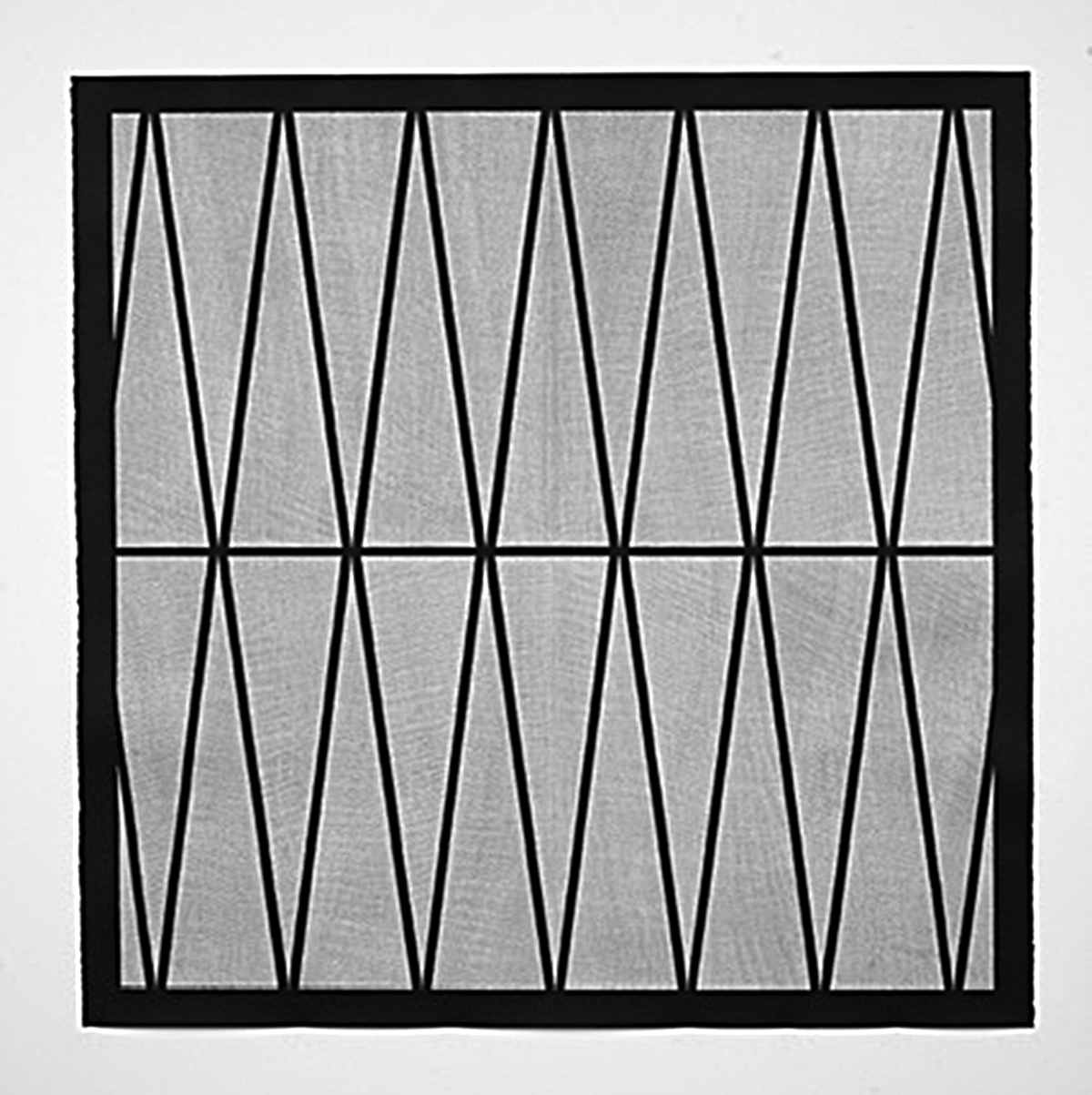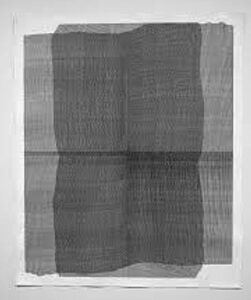Clark Valentine’s Line Drawings fall between being derived from a minimalist approach to art and the expressive qualities of Abstract Expressionism. Much like the artist Agnes Martin, Valentine finds himself with an inner conflict of seeking refuge in a world of solace and meditation and the need to express his personal visions in a precise manner.
Minimal art can be seen as extending the abstract idea that art that has its own reality and not be an imitation of the real world. Usually art is represented as an aspect of reality or reflecting an experience such as an emotion or feeling. With minimalism, no attempt is made to reference an outside reality, but instead, the artist wants the viewer to respond to what is in front of them.
The mediums from which art is made, and the form that the work takes on is the reality. Minimalist painter Frank Stella sums up what the artist is creating as, ”What you see, is what you get.”
But is it?
Minimalism emerged in the early 1960s when artists began to turn away from the gestural mark-making of the Abstract Expressionists. The development of minimalism is also linked to that of conceptual art. Both movements challenged the existing intention of making, disseminating and viewing art. One could argue that the importance given to an art object is often misplaced and only leads to a rigid and elitist art world (which only the privileged have the opportunity to enjoy.)
Clark Valentine’s aesthetic approach to making art offers the viewer a distilled form of beauty. It can be seen as presenting qualities of truth, order, simplicity and harmony. His rhythmic lines set a tempo to his drawings — undulating in perfect unison — and drawing the viewer in. Addressing matters of the spirit rather than reactionary gestures of anger and frustration, Valentine’s “Weaving” series, creates a call to retreat. His hand takes ours and leads us into an almost stress-free idyllic world void of drama but at the precipice of tension.
‘Weaving’
Another Untitled series demonstrates his trademark minimal element of ink on paper to create a stark contrast to the “Weaving” series. Void of the definitive parallel flowing lines of white ink on a black ground, these drawings are a reduction of formal structure through layering of dense repetitive mark making. Similar to artists like Sol Lewitt and Brice Marden, Clark Valentine builds a surface that is alive with texture and movement. It is the artistic diligence of layer over layer that piques the viewers’ imagination, and draws emotion and scrutiny from within.
Valentine reflects, “My mission is to cultivate a space for the viewer to feel the intimacy of drawing. My work explores the phenomenological experience of mark making. In my drawings, each mark becomes a unique repetition of the mark before it. Over time, the disruptions by the hand change the marks and the drawing takes itself in a new direction. These variations become key compositional features. The process of drawing them becomes a balance between an active meditation of the mind and a passive response of my hand.”
New works
In Clark Valentine’s new work there is an obvious overlap of forms and mark making. Like a Venn diagram, the overlap confirms commonalities and differences between the forms. The shift in mark making examines those marks that are distinct — and they stand alone and apart. This natural effect broadens his scope of meditation and to which the viewer is allowed access. The intersection of marks gives us pause to focus on the specific instead of the broad, and offers us a moment to understand the relationships the artist has created.
In collaboration with Master Printer Angela Risinger, Valentine is creating a relief print at the Peoria Art Guild Print Studio. This multi-plate print will be included in his exhibition “Between Spaces” at the PAG, May 2-30 in the Main Gallery. It will also be available for purchase at the exhibition.
On May 2, 2025, Clark Valentine will present a lecture at Bradley University’s Department of Art’s Visual Voices series on Thursday, May 1, 2025, at the GCC’s Horowitz Auditorium at 5 p.m. The lecture is free and open to the public.
The Peoria Art Guild is open 9 a.m. – 4:30 pm Monday-Friday and 9 a.m. – 2 p.m. Saturday Admission to the galleries is free and open to the public.





Recent Comments